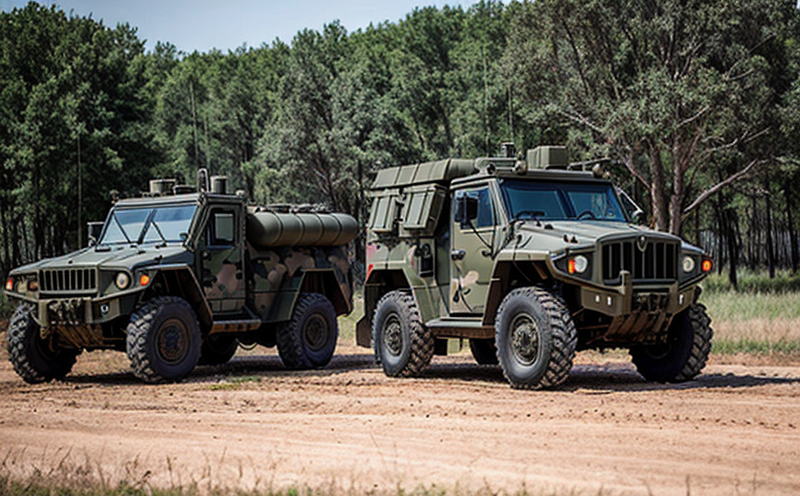Safety Standards for Military Equipment: Ensuring Protection for Personnel and Effective Performance
The military relies on a wide range of equipment to perform its duties, from tanks and artillery to aircraft and ships. These complex systems require rigorous testing and evaluation to ensure they meet safety standards, are reliable, and function as intended. The primary objective is to safeguard personnel while maintaining operational effectiveness.
Development of Safety Standards
Safety standards for military equipment are set by government agencies responsible for defense procurement, such as the US Department of Defense (DoD). These standards dictate requirements for design, testing, evaluation, and certification. Various factors influence standard development, including:
Threat analysis: Determining potential risks to personnel, including accidents, injuries, or fatalities.
Regulatory compliance: Ensuring that equipment meets relevant laws, regulations, and international standards.
Operational requirements: Balancing safety with performance needs, such as range, accuracy, and durability.
Technological advancements: Incorporating new technologies to improve safety features and operational capabilities.
Testing and Evaluation Protocols
Rigorous testing and evaluation are critical in ensuring military equipment meets established safety standards. Various testing methodologies are employed to assess an items performance under various conditions:
Static testing: Evaluating the equipments static characteristics, such as stability and balance.
Dynamic testing: Assessing its behavior during operation, including vibration, noise, and thermal stress.
Fatigue testing: Simulating repeated use to determine durability and lifespan.
Reliability testing: Analyzing the likelihood of equipment failure or malfunction.
Additional Safety Features
Beyond meeting safety standards, military equipment often incorporates additional features for enhanced protection:
Active defense systems: Countermeasures to mitigate threats from enemy fire, such as armor plating, explosive reactive armor (ERA), or soft-kill active protection systems.
Passive defense systems: Redundant design elements that reduce vulnerability to damage, including backup power sources and duplicate critical components.
Safety interlocks: Mechanisms designed to prevent accidents by restricting access to hazardous areas or limiting the operation of high-risk functions.
Question and Answer Section
Q: What is the primary purpose of safety standards for military equipment?
A: The main objective is to safeguard personnel while maintaining operational effectiveness. Safety standards ensure that equipment meets specified requirements for design, testing, evaluation, and certification.
Q: Who sets safety standards for military equipment?
A: Government agencies responsible for defense procurement, such as the US Department of Defense (DoD), develop and enforce safety standards for military equipment.
Q: What factors influence the development of safety standards?
A: Threat analysis, regulatory compliance, operational requirements, and technological advancements all play a role in shaping safety standards for military equipment.
Q: How are military equipments performance and safety evaluated during testing and evaluation protocols?
A: Testing methodologies include static and dynamic testing, fatigue testing, reliability testing, and evaluation of the items behavior under various conditions.
Q: What additional safety features often incorporate into military equipment?
A: Active defense systems, passive defense systems, and safety interlocks are common examples of enhanced protection mechanisms.
Q: How do safety standards address technological advancements in military equipment?
A: New technologies can be incorporated to improve safety features and operational capabilities while maintaining adherence to established safety standards.
Q: What is the role of testing and evaluation in ensuring military equipment meets safety standards?
A: Testing and evaluation are critical in verifying that equipment meets or exceeds safety requirements, which helps ensure personnel protection and effective performance.
Q: Are there any international standards for military equipment safety?
A: Yes, organizations like NATO and the International Organization for Standardization (ISO) establish guidelines and standards for military equipment safety to promote uniformity and consistency across countries.
Q: What are some common types of accidents or incidents that can occur with military equipment?
A: Accidents involving military equipment can include equipment failure, operator error, collision, or exposure to hazardous materials.
Q: How do safety standards address emerging threats and risks associated with modern warfare?
A: Safety standards evolve in response to changing threat landscapes, incorporating new technologies and design features to mitigate emerging risks while maintaining effectiveness on the battlefield.
Q: What is the relationship between military equipment safety and operational effectiveness?
A: Safe design and operation of military equipment are crucial for effective performance. Meeting or exceeding safety standards enhances the chances of successful mission execution while minimizing potential harm to personnel.
Conclusion
Safety standards for military equipment play a vital role in ensuring that personnel are protected during operations, while also maintaining the overall effectiveness of the equipment. Continuous development and enforcement of these standards help mitigate risks associated with modern warfare.

































